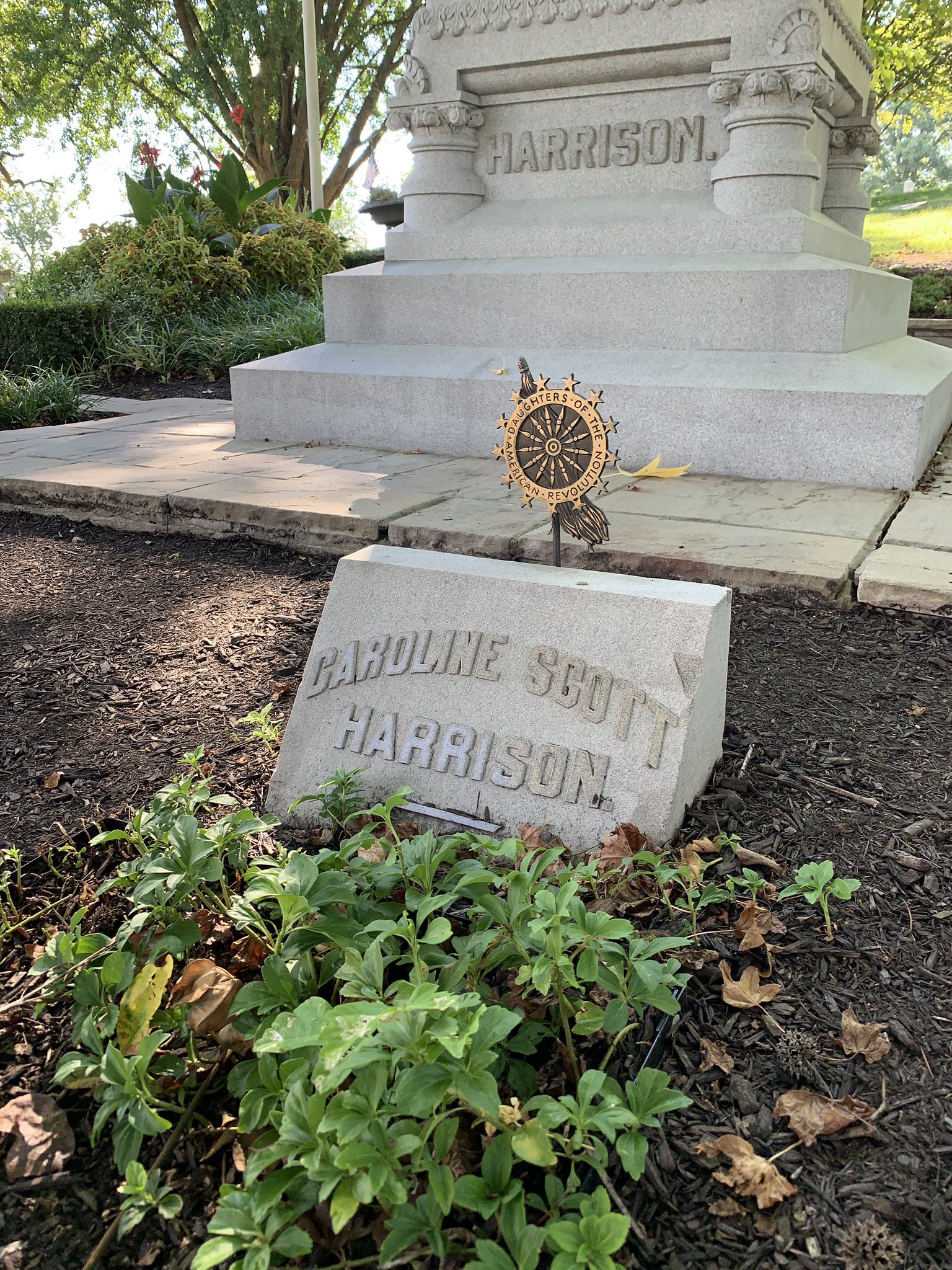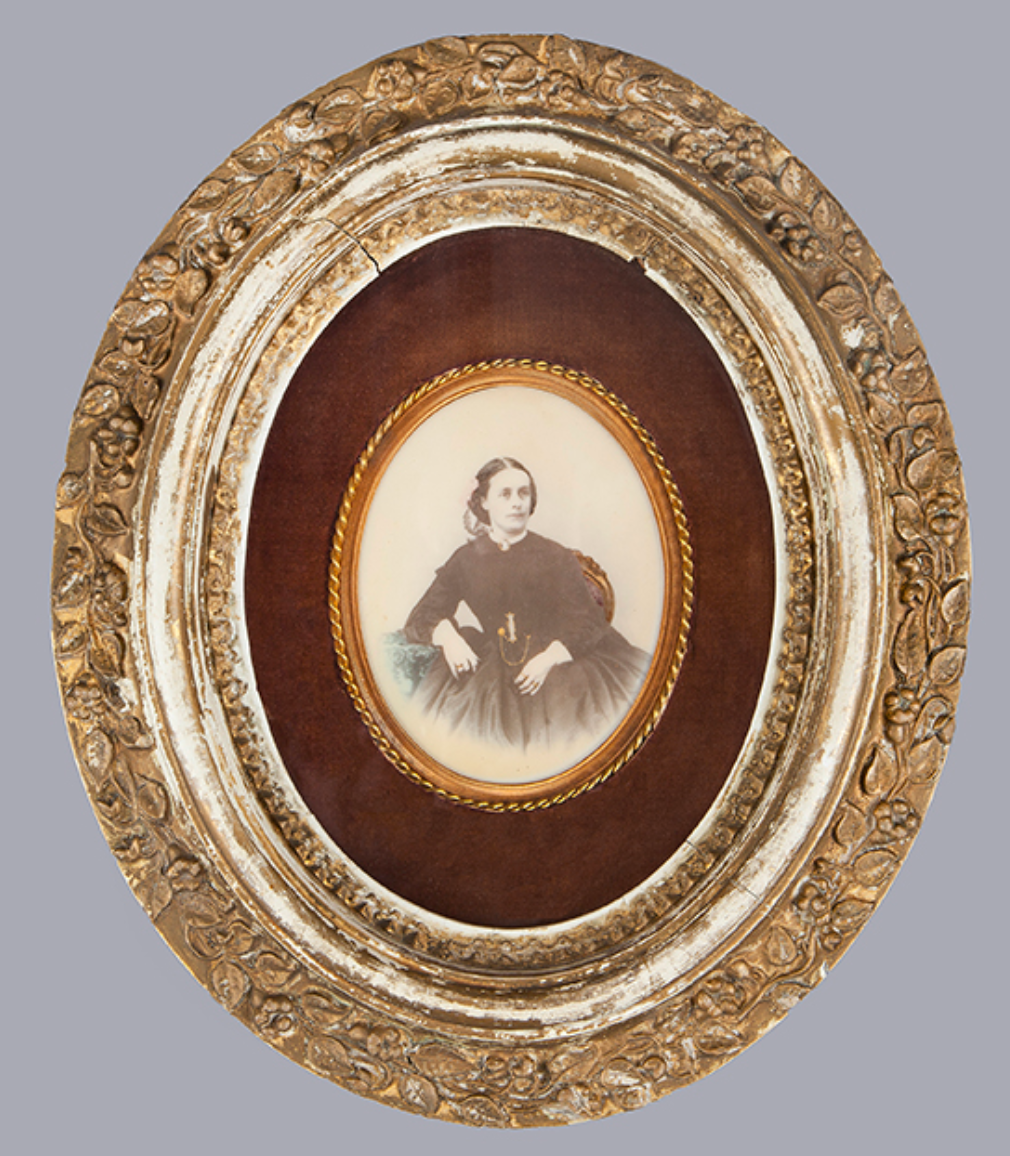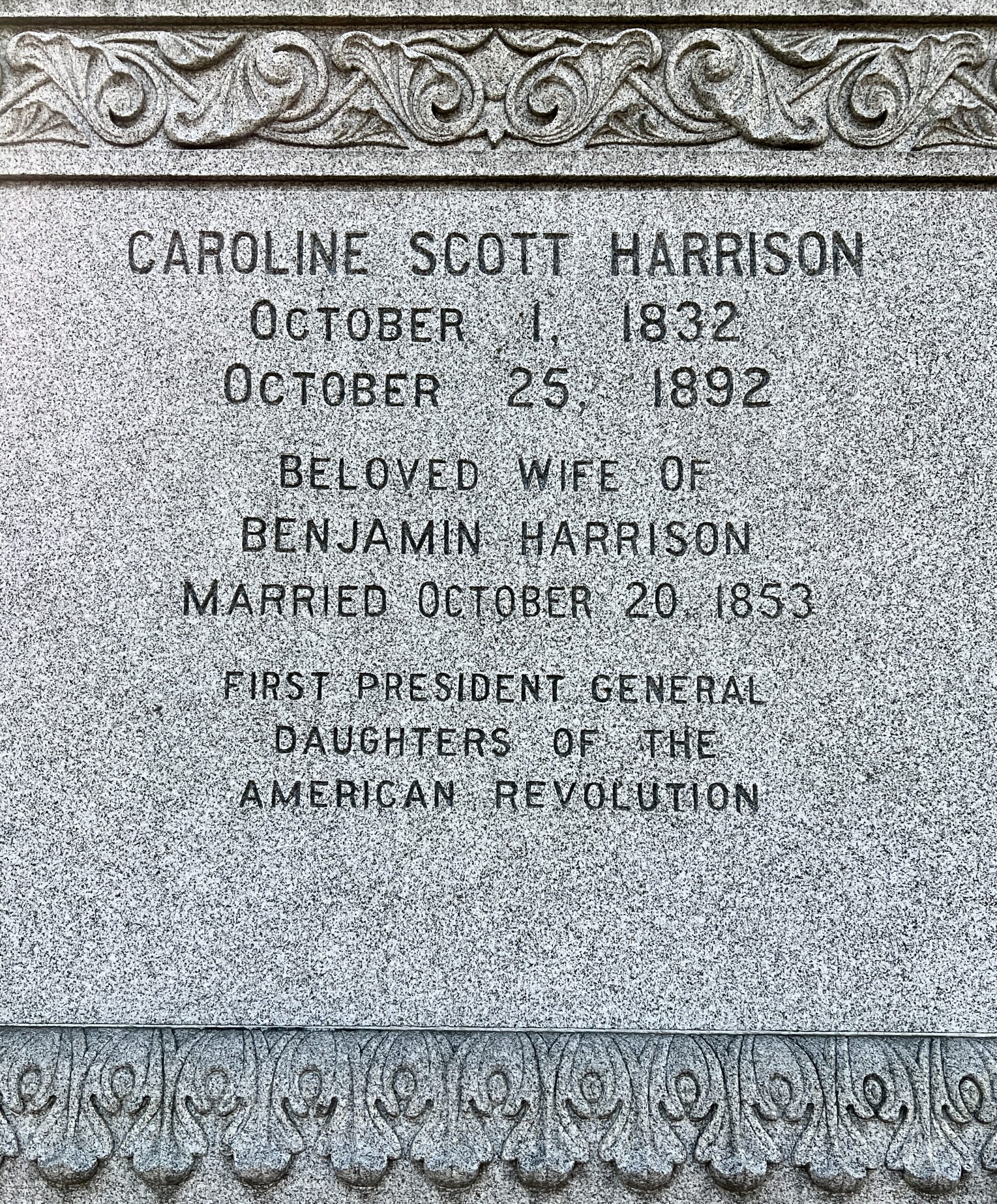Caroline Scott Harrison
Caroline Scott Harrison
(10/1/1832 – 10/25/1892)

Caroline Lavinia Scott was First Lady of the United States from 1889-1892, wife of President Benjamin Harrison, our nation’s 23rd president. She was born in 1832 in Oxford, Ohio, the second daughter of Mary Potts Neal and the Rev. Dr. John W. Scott, a Presbyterian minister as well as a Miami University professor and the founder of the Oxford Female Institute. Her parents were abolitionists and were active in the Underground Railroad. Her great-grandfather was the founder of the first Presbyterian church in the United States, and of the College of New Jersey, which was later renamed Princeton University.

Caroline was a pupil at Oxford Female Institute when she caught the attention of Miami University student Benjamin Harrison. In the words of Lew Wallace, who wrote a biography for Harrison’s presidential campaign, she was “girlish, intelligent, witty, attractive, in whom the young [Ben] quickly discovered all the qualities that entered into the composition of his ideal of the perfect woman.” They graduated from their respective schools in 1852, and she taught music for a year at Carrolton, Kentucky before they were married on October 20, 1853, with her father presiding.
The newlywed Harrisons soon moved from the Cincinnati area to Indianapolis where he began to build a law practice. She raised their son Russell and daughter Mary and was heavily involved in the community and church, including serving on the board of managers of the Indianapolis Orphan’s Home for 32 years. In addition to her charity work, Caroline found time for several literary clubs and to pursue the arts as both an accomplished pianist and painter.
 Harrison’s political career was interrupted by the Civil War, and both sought to help in the war effort. Benjamin served as a colonel in the Union Army and Caroline joined volunteer groups, visited her husband at the soldier’s camp and assisted where she could, and tended to wounded soldiers when home in Indianapolis. Harrison returned to politics following the war and a series of successes won him a seat in the U.S. Senate from 1881-1887, but Caroline’s poor health during much of this time brought her back to Indianapolis during the socially active Washington winters. After Harrison was elected president, Caroline moved with poise to the White House in 1889 to continue the gracious way of life she had always created in her own home. During Harrison’s presidency, the country was celebrating the centennial of George Washington’s term and in the mood for both nostalgia and preservation. She thus found herself at the forefront of plans for a major renovation of the White House. Caroline started the tradition of the White House Christmas tree, and electricity was added to the White House through her modernization efforts, although the Harrisons were so afraid of it that they had staff operate the lights rather than take a chance of touching a light switch themselves!
Harrison’s political career was interrupted by the Civil War, and both sought to help in the war effort. Benjamin served as a colonel in the Union Army and Caroline joined volunteer groups, visited her husband at the soldier’s camp and assisted where she could, and tended to wounded soldiers when home in Indianapolis. Harrison returned to politics following the war and a series of successes won him a seat in the U.S. Senate from 1881-1887, but Caroline’s poor health during much of this time brought her back to Indianapolis during the socially active Washington winters. After Harrison was elected president, Caroline moved with poise to the White House in 1889 to continue the gracious way of life she had always created in her own home. During Harrison’s presidency, the country was celebrating the centennial of George Washington’s term and in the mood for both nostalgia and preservation. She thus found herself at the forefront of plans for a major renovation of the White House. Caroline started the tradition of the White House Christmas tree, and electricity was added to the White House through her modernization efforts, although the Harrisons were so afraid of it that they had staff operate the lights rather than take a chance of touching a light switch themselves!

Washington’s centennial also renewed the nation’s interest in the Revolutionary War era. Caroline was in favor of women’s rights and co-founded the National Society of the Daughters of the American Revolution and became its first President General. When John Hopkins Medical School sought her endorsement for a major fund drive, she agreed to do so only after the school pledged to admit female students. During the winter of 1891-1892, Caroline was stricken with tuberculosis. Her illness took President Harrison’s heart out of any re-election efforts, and she died on October 25, 1892, just weeks before Election Day when he was defeated by Grover Cleveland. Funeral services were held for Caroline in the East Room of the White House before a final service and burial in Indianapolis.
Buried in Section 13, Lot 57; GPS (39.8189286,-86.1756548)

